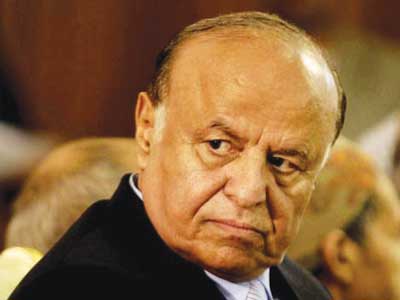The fall of Sanaa: What next for Yemen?
Tuesday, 23 September 2014
Dr. Theodore Karasik /Al Arabiya
What was seen a few weeks ago, a Houthi takeover of Sanaa, now seems to be occurring, perhaps even imminent. Over the past few weeks, Houthis and their supporters have been staging protests and sit-ins in Sanaa, demanding a re-instatement of fuel subsidies and calling on the country’s transitional government to step down. The protests in Sanaa remained relatively peaceful until September 9, 2014. Security forces opened fire on Houthi demonstrators approaching the cabinet office, killing seven people and injuring many.
Tensions escalated further on September 18th after attempts by the Houthis to seize the area around the Yemen TV building prompted heavy armed confrontation with armed militias linked to the Sunni Islamist Islah party with over 40 people killed. Finally, Prime Minister Mohamed Basindawa stepped aside, accusing President Abed Rabbo Mansour Hadi of being “autocratic.”
“There is no doubt that the fall of Sanaa will, as significant as the rush of ISIS into Iraq a month or so ago, be just as destabilizing”
Dr. Theodore Karasik
Two days ago, an agreement signed with the Houthis and the Hadi administration forced the government to appoint Houthis and representatives from the restive south within the presidential circle. Whether one wants to call this action a mini-coup or an insurgent victory, this event is a huge shift in power relations in Yemen.
Importantly, the fighting in Sanaa has both sectarian and tribal political elements, along with a strong emphasis on retribution. The street battles between the armed Shiite Houthi movement and tribal and Sunni Islamist militias might escalate further with potential for street fights and car bombings. Sanaa’s fall to the Houthis will rewrite many aspects of what is happening to Yemen with regional repercussions.
Sectarian battle
Primarily, the first repercussion is within Yemen itself. The country is quickly being drawn into a sectarian battle between the Zaidi Houthis, the Islamists represented by Islah, and ultimately al-Qaeda Arabian Peninsula (AQAP). Mixed into this cauldron are Yemeni tribes who pick and choose their sides through ethos and payoffs. The tribes are in many respects “guns for hire” in the toxic mix in the Yemeni capital. AQAP will certainly take advantage of the situation. With the Yemeni President Hadi preoccupied with preserving his power, the joint Yemeni-American campaign to keep AQAP pinned down will likely be in jeopardy. Clearly, the al-Qaeda franchise, along with other Sunni extremists, will push for more sectarian clashes in Sanaa in addition for the potential battles between groups and interests in the country’s secessionist south while the capital sputters politically and burns physically.
The second ramification is the impact on Saudi Arabia. For Riyadh, the situation in Yemen – in the current context of threats surrounding the Kingdom i.e. ISIS to the north – is untenable and dangerous. Saudi Arabia and the other Sunni Muslim-led Arabian Gulf states believe that the Zaidi rebels in Yemen are backed by Iranian meddling.
Significantly, Saudi Arabia is likely to feel that it is being squeezed from two directions, both north and south. This pressure, if Riyadh blames Tehran and its partners for the situation on both sides of the country, could provoke more bitter feelings at a crucial time where cooperation is needed in the Levant against ISIS.
Combination threat
The third consequence is a combination of the first two potential effects outlined above: The growing sectarian battle combined with the threat from the north. As we know, ISIS is attempting to build up its capacity as an armed and economically sound organization despite the international calls for war against the group. In addition, ISIS is ultimately pushing for not only a confrontation with the “Crusader” West but also stoking the flames of sectarian tensions in the Levant. AQAP sees this fact, and, as evidence shows, some AQAP member support ISIS. With or without ISIS, AQAP sees the sectarian battle as a key to winning more territory in Yemen and thus is ready to confront the Zaidi Houthis and their allies in Saana. What is seen as an epic battle in the Levant may be joined by an epic battle in the southern tip of the Arabian Peninsula. This instability and volatility may be the greatest challenge faced by the Gulf States since the advent of al-Qaeda.
Clearly, the southern Gulf States, while joining the international coalition against ISIS, are concentrating too on the Houthi’s prospective win in Sanaa. While the southern Gulf States are contributing to the operations against ISIS in kinetic terms, they may be focusing on the requirements necessary to also intervene in Yemen using a combination of force and influence to turn the tide through tribal networks. No southern Gulf State can accept instability on all sides of their borders.
Former Prime Minister Mohammad Basindawa’s recent resignation could be setting the stage for him to come to power as president with Houthi support. This move would be seen as a “win” for political Islamists throughout the region and would likely be unacceptable to Yemen’s northern neighbors. There is no doubt that the fall of Sanaa will, as significant as the rush of ISIS into Iraq a month or so ago, be just as destabilizing.






















